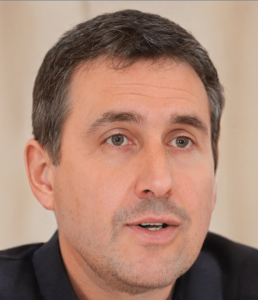Did you know that the chance of a Federal Reserve interest rate cut was once 96.4%? This is a key piece of info that can shift billions in the crypto market in just days. That’s why understanding the big picture is my first step in assessing blockchain projects. It’s crucial to see how things like economic policies, marketing, and tech milestones can influence outcomes.
My advice comes from real experience with examining tokens, presales, and platforms. Studying blockchain projects goes beyond theory. It means looking at Federal Reserve actions and market signals. It also involves identifying promo strategies like big presale bonuses and evaluating solid milestones. For example, just as updates in biotech trials can influence investments in healthcare, changes in crypto protocols and audits can shift funds in the cryptocurrency world.
In this guide, I’ll share specific examples. You’ll learn about rate predictions from CME, presale events that raise too many expectations, and how big players back Bitcoin and Ethereum. These points help you sift through the crypto buzz. They show you when to trust a project and when to ignore the hype.
Key Takeaways
- Start with macro context: monetary policy and liquidity affect crypto flows.
- Spot promotional mechanics in presales that can distort perceived returns.
- Compare project milestones to real-world analogues, like clinical trials.
- Use evidence-based steps when doing blockchain project research.
- Integrate cryptocurrency due diligence into each stage of evaluation.
Understanding Blockchain Fundamentals
I start here because you need a clear understanding to evaluate blockchain projects. I’ll share core concepts useful for researching blockchain projects. You’ll learn what to look for and why it’s important.
What is Blockchain Technology?
Blockchain is a distributed ledger technology. It records transactions in blocks that are linked together. Technologies like proof-of-work or proof-of-stake are used to secure these blocks. I also consider if a project is run on the main network or just a test network, since it affects risk.
Key Terminology in Blockchain
Understanding key terms helps ignore hype. I pay attention to smart contracts, gas fees, token economics, and how consensus is reached. It’s important to know the total and current supply of tokens and how new ones are released into the market.
Choosing between on-chain and off-chain affects trust and speed. The use of bridges and oracles impacts how well blockchains work with real-world data. These concepts are crucial in blockchain research.
Importance of Research in Blockchain
Research involves both technical aspects and context. It includes understanding regulations, monetary policy, market dynamics, and promotional strategies. Comparing blockchain projects to biotech milestones, like Akeso’s trials, can be helpful.
I look for active network indexes, clear token distribution plans, and if the project’s whitepaper aligns with its code and launch plans. These factors are key in teaching others about blockchain research.
Analyzing Blockchain Projects
When I look at blockchain projects, I have a checklist. I focus on what’s important for users and builders. This includes token use, consensus types, how they handle voting, data available on the blockchain, their economics, and how safe they are. I aim to see beyond the fancy ads to the real technology.
I focus on key parts to figure out if a project will last. The use of tokens needs a clear purpose, not just big promises. How a project reaches agreement shows if it can grow without giving up control. How it’s governed shows who makes big decisions.
How much it’s used is seen in the data on the blockchain. The setup of its economy, like how many tokens there are, if the amount decreases over time, and rewards for holding tokens, guides its future. Safety is about if they share security checks and look for bugs actively.
It’s crucial that the project solves a real problem. I ask if it truly offers a new solution or just repackages old ideas. For instance, DeFi projects like Aave show how blockchain can replace traditional credit checks. But claims of changing finance without clear proof or partnerships should be questioned.
Next, I look at the technology they use. I check the programming languages for the smart contracts, whether they’re building on a main layer or a secondary one, and how well they work with other systems. Depending on outside data sources too much can be risky. It’s also important to know what kind of tech framework they’re using as it affects future compatibility and risks.
Their roadmap and future plans must be realistic. I check for updates they’ve made, if they’ve tested their system publicly, started officially, or got listed on exchanges. How and when they sell their tokens before launching can really change their value and how much there is to go around. I take their future plans as seriously as news from medical research, looking for solid proof like audits or reports from tests.
When I review blockchain whitepapers, clarity and detail are key. A good whitepaper will show how the system works, precisely define how tokens are spread out, and explain their economic thinking clearly. Missing details or unclear explanations are warning signs. You should be able to get their logic without needing special access.
My tips for checking blockchain projects come from seeing the same things multiple times. Match planned dates to actual blockchain events. Compare how tokens are given out to what’s normal in the industry. Make sure the audits are from real firms and check their findings carefully. Use blockchain search tools to confirm how many users there are and their activity level. Follow what the developers say, not just the marketing talk.
Here’s a quick list I use to compare projects quickly. It helps me spot issues early and decide which ones need a closer look.
| Checklist Item | What I Look For | Red Flags |
|---|---|---|
| Token Utility | Clear function, economic incentives, staking or burn mechanisms | Vague “governance” without use cases, unlimited minting |
| Consensus & Layer | Documented consensus (PoS, PoW, optimistic rollup), layer choice explained | Unexplained hybrid models, reliance on untested sidechains |
| Governance | On-chain proposals, token-holder voting, multisig controls | Centralized control by a small address set |
| Tokenomics | Supply cap, emission schedule, staking rewards, vesting schedules | Large team allocations unlocked early, no vesting |
| Security | Third-party audits, bug bounty programs, public audit reports | No audit, closed-source contracts, expired audit reports |
| On-Chain Metrics | Active addresses, transaction volume, liquidity on exchanges | Synthetic volume, wash trading, tiny user base |
| Roadmap Validation | GitHub commits, testnet/mainnet launches, verified listings | Milestones with no external proof or shifting dates |
Evaluating the Team Behind the Project
I start by checking out the team. It’s straightforward: a quick look at LinkedIn and GitHub helps. I can see if the founders know their stuff or have succeeded before. This is a key method for evaluating blockchain projects.
It’s key to find detailed biographies, proven roles in well-known companies, and fresh code contributions. A link to a Stanford paper or a GitHub repo with new commits builds trust. But if the team is unknown, or their stories don’t match up, that’s a warning sign.
Assessing Team Experience and Reputation
It’s wise to check if they’ve worked at places like ConsenSys, Coinbase, or Chainlink Labs. Look for successful launches and important papers. Adding to that, I check conference talks and blog posts to be sure of their skills.
To do proper team checks, look at their education, patents, and any startups they’ve sold. If a leader has successfully sold a company or published respected papers, that’s good. If something doesn’t seem right, it’s time to ask hard questions or move on.
Importance of Transparency and Communication
Being open is vital. I look for public plans, audit details, and clear info on token shares. Regular updates from developers and set governance rules show they care about their stakeholders.
Be cautious with all-talk marketing. Promises of big early bonuses might hide details that mainly benefit the insiders. Sometimes, I look at analyses like key metrics for presales to understand the real deal behind the incentives and vesting terms.
Community Engagement and Support
The vibe of the community tells a lot. I look through Telegram, Discord, and Reddit for meaningful chats. The presence of thorough technical talks over mere excitement, active moderators, and frequent AMAs shows good engagement.
Stay away from quick-win schemes: if the chat is all about giveaways, buying now, or endless referrals, think twice. A good sign is when there’s gradual growth, real questions, and answers from developers that make sense.
| Aspect | What I Check | Positive Signal | Warning Sign |
|---|---|---|---|
| Background | LinkedIn history, prior exits, academic papers | Roles at Coinbase, ConsenSys, published research | Vague or unverifiable resumes |
| Technical Proof | GitHub activity, testnets, audits | Recent commits, public audits, testnet milestones | No repo or stale codebase |
| Transparency | Roadmaps, tokenomics, audit reports | Clear vesting, published audits, governance docs | Opaque token allocation, hidden vesting |
| Communication | Developer updates, AMA records | Regular technical updates and answered questions | Marketing-only announcements |
| Community | Discord, Telegram, Reddit activity | High-quality discussion and active moderators | Hype-driven channels with referral spam |
Tools and Resources for Project Research
I have a go-to toolkit for deep dives into projects. It helps me save time and get past the hype. Here’s a list of what I use, why they’re important, and checks I do every time.
Top Research Tools for Blockchain Investors
I start with on-chain explorers like Etherscan, BscScan, and Polygonscan. They show me where tokens are moving, confirm contract addresses, and let me look at transactions. Nansen and Dune Analytics tell me about wallet concentrations and how tokens are spread out.
CoinGecko and CoinMarketCap give me the lay of the land. I use Glassnode for on-chain data. For security, I go through reports by CertiK, Quantstamp, and Trail of Bits. These tools are my trusted aids for checking the basics and more.
Recommended Websites and Online Communities
I keep an eye on social media like Telegram, Discord, X (Twitter), and Reddit’s r/CryptoCurrency. The mood there can flag potential issues, like too much hype or manipulation.
When checking press releases, I look for confirmed details. An announcement about a presale needs to match up with exchange listings and contract details. It’s crucial to use multiple information sources. Good research triangulates data from markets, audits, and community vibes.
Using GitHub for Technical Insights
GitHub shows me if a project’s code is active. I look at how often they update, community involvement, and problem-solving. Stale or unattended repos raise alarms for me.
Combining GitHub with on-chain data and analytics is powerful. I cross-reference development claims with actual activity. Projects that promise new features should have signs of ongoing work and updates.
Here’s my checklist for each review:
- Confirm contract addresses on Etherscan, BscScan, or Polygonscan.
- Use Nansen or Dune to check wallet clustering and token concentration.
- Read recent audit reports from CertiK, Quantstamp, or Trail of Bits.
- Verify market listings on CoinGecko or CoinMarketCap.
- Inspect GitHub activity for commits, contributors, and CI results.
- Cross-check social claims against on-chain evidence and exchange confirmations.
Using this mix of tools helps me review projects thoroughly. It cuts down on guessing. Combining data analysis, direct checks of the code, and community feedback provides a comprehensive view.
Market Trends and Statistics
I track market cycles like I check the weather before a hike. Short-term dips and rallies create opportunities. Bitcoin and Ethereum set the market’s mood. Speculative presales and altcoin changes add unpredictability. This insight is crucial for researching blockchain projects.
Overview of the blockchain market
The global crypto scene is showing mixed signs. Big players like Bitcoin and Ethereum influence overall sentiment and money flow. Movements in these coins often signal changes across all cryptocurrencies and presales.
To stay updated, I look at market tickers and comprehensive reports. For daily figures, I sometimes use resources like market live updates.
Key statistics driving investment decisions
I monitor Bitcoin’s price, Ethereum’s value, and how much is being traded on exchanges. These numbers help me understand investor interest and market dynamics.
I examine data like Bitcoin’s price nearing six figures, Ethereum’s cost in the thousands, and trading volumes reaching billions monthly. I also look at money raised in presales and economic indicators, like interest rate changes. This helps me decide when to invest.
| Metric | Representative Value | Why it matters |
|---|---|---|
| Bitcoin price | $115,000 (approx) | Macro anchor for risk-on moves and store-of-value flows |
| Ethereum price | $4,600 (approx) | Contract activity and DeFi health indicator |
| Monthly trading volume | $300B–$330B (illustrative) | Shows liquidity and potential for large moves |
| Presale capital raised | Millions per notable project | Signals retail/speculative interest and supply pressure |
| Institutional flows | ETF filings, staking products growth | Longer-term capital and productization of crypto exposures |
Predictions for the future of blockchain
I prefer sketching scenarios over making definite predictions. One possibility: relaxed financial policies may boost the market, helping both stablecoins and higher-risk tokens. Or, the market could stabilize, focusing more on specific sectors like layer 2 solutions.
I also foresee more banks and financial firms embracing blockchain through ETFs and staking services. Efforts from companies like Standard Chartered are shaping the future of crypto investments.
Creating a research checklist, I map out Bitcoin and Ethereum’s pricing trends alongside presale investments. Charting monthly trading volumes is also key. These visuals help me gauge the best timing and understand the risks of different blockchain projects.
- Keep an eye on big economic indicators and CME futures for interest rate trends.
- Watch the actual volume of crypto trading and blockchain activities for real-time insights.
- Analyze fundraising efforts in comparison to blockchain usage to gauge market health.
Connecting all these dots is vital for researching blockchain projects efficiently. Use general market trends and specific data as your guide. Verify your findings with press announcements, trading data, and official records to make well-informed decisions.
Conducting Competitor Analysis
I look at competitor analysis as homework for finding our product-market fit. First, I identify both direct and indirect competitors. This includes those targeting the same users and those that might enter our market. This step makes comparing them easier and avoids focusing on companies that don’t matter to us.
I then create a simple chart. It lists things like product features, how the economy of the token works, the activity of developers, partnerships, how big the community is, metrics that are tracked on the blockchain, and if their business can keep going long-term. This chart is my guide for analyzing any blockchain project.
My next step is to put older players like Bitcoin and Ethereum side by side with new ones and those in decentralized finance. I look at their activity levels and plans for the future. For instance, looking at their volume of trades and projected goals helps me see if they can hit their tech milestones.
Identifying Key Competitors in the Space
I categorize competitors into groups like the main blockchain protocols, secondary layers, decentralized finance platforms, and those dealing with tokenized assets. I include well-known companies and new ones that are just starting to sell their tokens. This way, I don’t miss any potential rivals.
Strengths and Weaknesses of Competitors
I rate each competitor on how secure they are, how complete their features are, and how quickly their developers make improvements. I also notice if their marketing makes their token look good only for a short time but might not be good in the long run. I put these ratings into a table to compare them easily.
| Project | Core Strength | Primary Weakness | Key Metric |
|---|---|---|---|
| Bitcoin | Institutional recognition, liquidity | Limited programmability | Spot ETF adoption |
| Ethereum | Smart contract ecosystem, developer base | Scaling costs | Active developer commits |
| Hyperliquid | High trading volume | Concentration risk | Reported $330B monthly volume |
| World Liberty Financial | Financial product focus, partnerships | Market penetration still growing | Partnership announcements |
| Arctic Pablo Coin (presale) | Aggressive incentives | Unproven utility | Presale bonus structure |
Market Positioning Insights
I search for signals like ETFs, being listed on an exchange, and official partnerships. Projects with these qualities often maintain a lead in the market. This kind of positioning in the blockchain world helps build trust and opens up access to funds.
In my analysis, I balance hard data with where the project stands in the market. Numbers like trade volume, updates by developers, and safety checks are important. Equally, partnerships and the project’s story in the investment world matter too.
In the end, I organize my findings into actions: what ideas to take from others, what mistakes to avoid, and how to set ourselves apart. This focused way of looking at competitors gives us clear steps on what to work on regarding our product, messaging, and tech needs.
Risks and Challenges in Blockchain Projects
I’ve learned a lot about the risks in blockchain projects over the years. I’ve seen promising ideas fall apart. The risks are real, not just theories. Simple coding errors, unfair token setups, or too much hype can destroy value quickly.
I’ll share the common issues I’ve seen and how I avoid them. This advice comes from real experience, not just books.
Common Risks to Consider
Bugs in smart contracts are a big way to lose money. Even if the code’s been checked, hidden problems can still be found and used.
Other risks include rug pulls and high token ownership by founders. This can make manipulating prices easy.
Being removed from exchanges and falling for scams can also harm. When too many bonuses are given out early, it usually benefits insiders, not you.
Regulatory Challenges Facing Blockchain
The legal issues facing blockchain are serious and constantly changing. New laws in the U.S. and demands for stricter checks make things uncertain.
Sudden political debates and law changes can shake the market. If projects don’t follow the new rules, they might have to shut down.
If teams are hidden or governance is poor, it’s riskier. When regulators notice, the community’s trust can disappear.
Mitigating Risks Through Research
Doing your homework on cryptocurrency is key. Start with checking third-party audits thoroughly.
Look for clear proof of token locks and watch for odd token activities. Also, make sure to spread out your risk.
Stay updated with regulatory news from the SEC and others. Keeping a close eye can help predict changes.
Always check everything – code, audits, team backgrounds, and marketing promises. Changing your mind based on new info has saved me a lot.
Frequently Asked Questions
I coach readers through some easy steps I use to check projects. Start with a few key things: the team’s background, how active they are on GitHub, the project’s tokenomics, its audit status, and how engaged and real the community feels. Always check the project’s contract addresses and when it got listed on exchanges. I recommend only investing what you’re okay with possibly losing.
How Do I Start Researching Blockchain Projects?
Start with a simple checklist. Look at the team’s profiles on LinkedIn and how often they update GitHub. Check for audits by third parties and how the tokens are distributed over time. Verify claims about when they were listed on exchanges, like PancakeSwap, by looking at their timelines. These methods are at the heart of my approach to research blockchain projects methodically.
What Should I Avoid When Researching?
Stay away from projects that are all talk but no substance, and those without audits or clear token plans. Ignore airdrops that can’t be verified and advice from influencers only. Doing your homework well in crypto involves being skeptical about overly inflated community sizes and reviewing the contract code before buying in.
How Can I Stay Updated on Latest Developments?
Use CoinGecko or CoinMarketCap to set up alerts. Follow Dune and Nansen for real-time data on the blockchain, and subscribe to newsletters you trust. I keep an eye on developer updates and stay active in Telegram or Discord groups, listening carefully. Watching global economic indicators, like decisions from the Federal Reserve or changes in CME futures, helps me know the best times to make my moves.
To get a wider view of the market and stay on top of trends, I check out reports and guides. For example, this guide highlights key investment trends. It’s a great way to keep up with how to research blockchain projects and stay sharp on your crypto due diligence.
Conclusion: Making Informed Decisions
I use a specific playbook when learning to research blockchain projects. It begins with checking the basics: is the whitepaper easy to understand, does the project solve a real problem, and can you get what the technology is about? Next, I look into the team’s background and the project’s code on GitHub. It’s crucial to check the project’s progress and how it interacts with the market. Also, never overlook big picture factors like economic policies and legal changes — they can quickly change the game.
When analyzing blockchain projects, use a straightforward list: team expertise, technology, how the economics work, security checks, community engagement, project plans, and if it fits the market. Watch out for hype during presales, like the Arctic Pablo Coin situation. It had warning signs hidden by too much excitement and questionable presale practices.
Staying updated is key. I often look at blockchain data and keep up with trusted news and legal updates. I also learn from other areas, such as biotech, like how Akeso’s clear progress reports in trials help reduce doubts and increase trust.
I constantly use tools like Etherscan/BscScan, Dune, Nansen, Glassnode, CertiK, CoinGecko, and GitHub. I also engage with community forums. A critical approach is to see every claim as something to be tested. Look for proof like contract addresses, security audits, and third-party validations before believing any story. Following these steps will make your blockchain project analysis strong and thorough.






